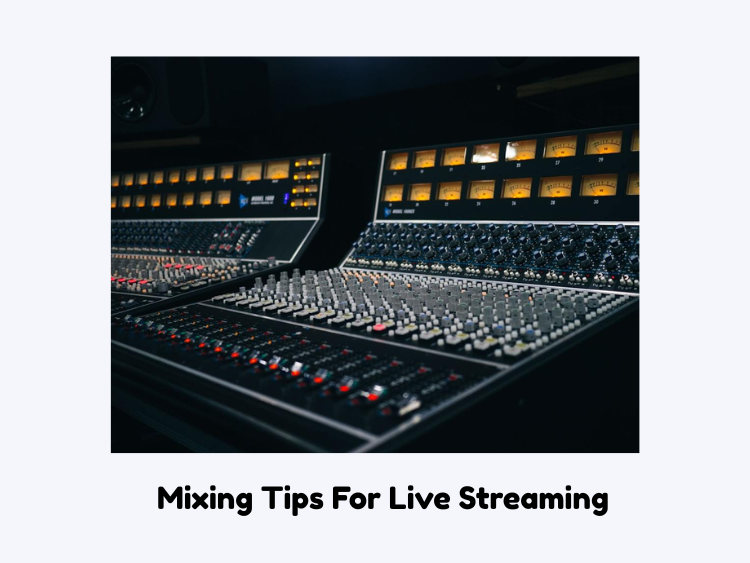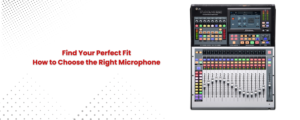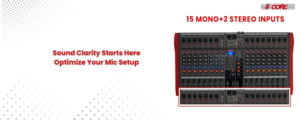If you’ve ever watched a livestream with poor audio quality, you know how frustrating it can be. Poor sound could turn people away, no matter how good the content is. Clear, balanced audio is essential whether you’re streaming a podcast, a musical performance, or a gaming session. In this article, the good news is that achieving excellent sound quality doesn’t require you to become a sound engineer. Accurate methods and instruments will enhance your live broadcast mix. These fundamental mixing methods allow you to achieve the optimum audio quality for your streams.
1. Choose the Right Microphone
Your audio setup starts with your microphone. Investing in a quality microphone is crucial because built-in laptop or webcam mics usually produce poor sound quality. The following are a few options to consider:
- Dynamic Microphones: Great for noisy environments and live vocals.
- Condenser Microphones: Offer richer detail but are more sensitive to background noise.
- Lavalier Mics: Excellent tool for mobile streamers or those creating interview-style content.
Beginning consumers will require an effective USB microphone, while those seeking greater control may prefer an XLR mic via an audio user interface.
2. Use an Audio Interface or Mixer
Employing an XLR microphone demands an audio interface or mixer to connect it to the computer. A high-quality audio interface provides lower latency, clearer sound, and better input level control. If you operate multiple audio sources—such as a microphone, background music, and game audio—a mixer enables you to instantly change volumes.
3. Optimize Your Microphone Placement
Proper microphone placement can make all the difference.
- For clear, visible vocals, keep the microphone 6–12 inches from your mouth.
- In order to cut plosive sounds—like those of “P” and “B”—use a pop filter.
- To decrease sibilance and breath noise, angle the mic a bit off-axis.
4. Control Your Room Acoustics
In an area that has poor acoustics, even the most powerful microphone will not sound outstanding. To improve your room’s acoustics:
- To reduce echo and reverb, use rugs, carpets, foam panels, and soft furniture.
- Stay clear of recording in big, devoid-of-anything, hard-surfaced rooms.
- Use EQ and noise gates as needed to get rid of unwelcome background noise.
5. Balance Your Audio Levels
There is no distinction between music that is excessively loud and a voice that is excessively soft.
Make an effort for the decent combine in which:
- Your voice should be clear and prominent.
- Despite not being consumed, background music is audible.
- Game or system sounds should be at an appropriate level.
Use audio meters contained in your streaming program to ensure that neither of them is too quiet nor peaking (clipping). On your meter, the correct vocal level should land around -12 dB to -6 dB.
6. Use Compression for a Consistent Sound
Compression helps control volume spikes and ensures a more consistent sound. Gently compress vocals to maintain their consistency and prevent them from drowning out unexpected loud noises.
7. Apply Equalization (EQ) to Enhance Clarity
Through frequency balance adjustment, EQ shapes your sound. Here are a few broad EQ pointers:
- To minimize creaking, cut low frequencies—below 80 Hz.
- Reduce mids (300Hz – 500Hz) to remove muddiness.
- Moderately raise highs (3 kHz–6 kHz) for vocal clarity.
Most streaming programs consist of built-in EQ controls for customizing your mix.
8. Reduce Background Noise
Background noise can be distracting for viewers. To reduce it:
- Silence your microphone using a noise gate when you’re not talking.
- Switch on noise cancelling in your streaming program.
- Avoid fan or AC noise; stream in peaceful surroundings.
9. Monitor Your Sound in Real Time
Always verify the audio of your online video with headphones. This enables you to identify issues before they interfere with your workflow. To avoid audio bleed, wherever possible utilize closed-back headphones or in-ear monitors.
10. Test and Adjust Before Going Live
Always perform a sound check before going live. Record a short test stream and listen for:
- The volume balance is maintained throughout effects, music, and voice.
- Including any knowledge, noise, or echo… cut or distorted.
Adjust as needed to achieve a professional, polished sound.
Conclusion
Your live stream can be destroyed or improved by great audio. Putting money in a decent microphone, changing your setup, and smoothing your mix will enable your audience to experience professionalism. Try these concepts, play about them with your preferences, and before long, you’ll be streaming with perfectly clear audio that keeps individuals interested and returning!




